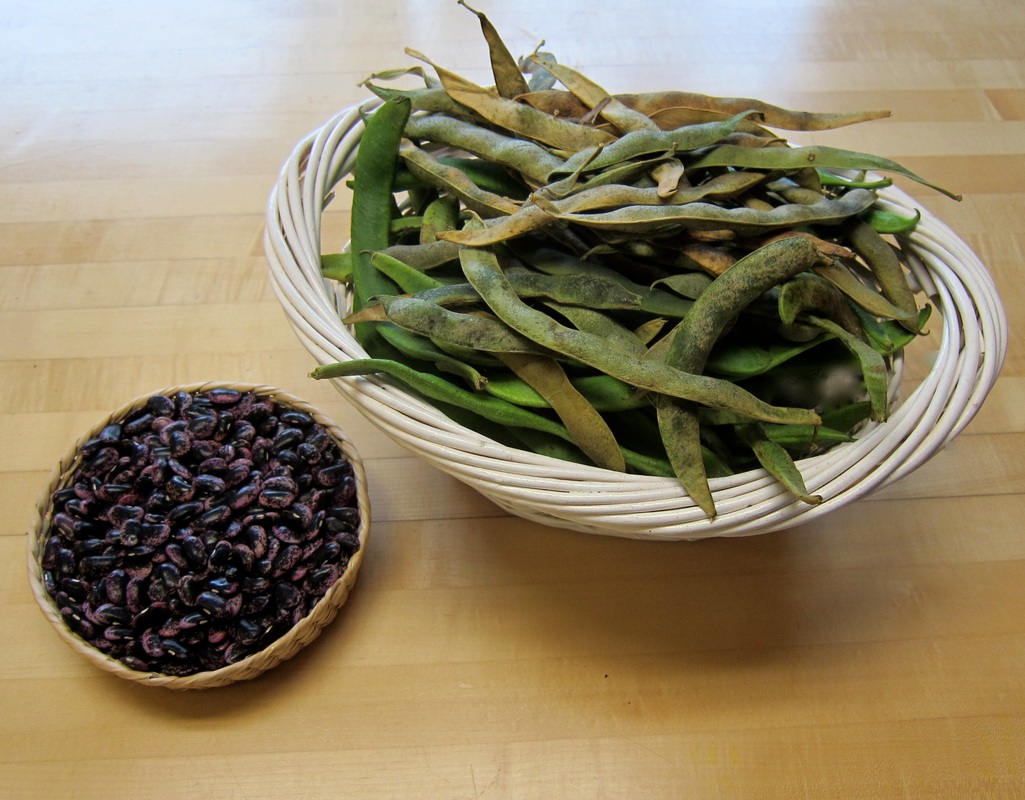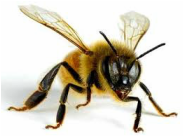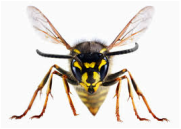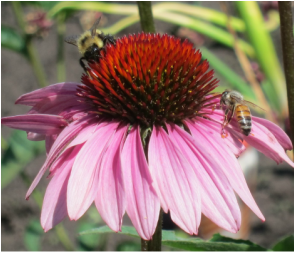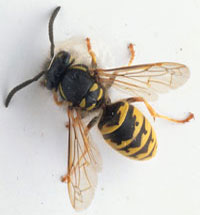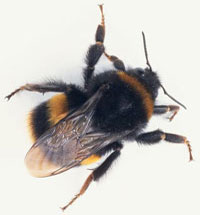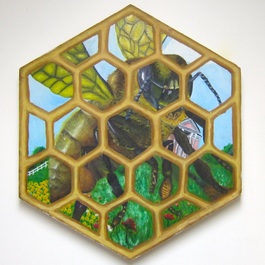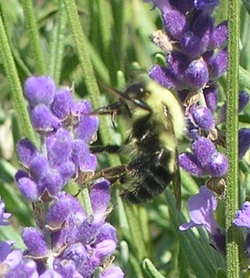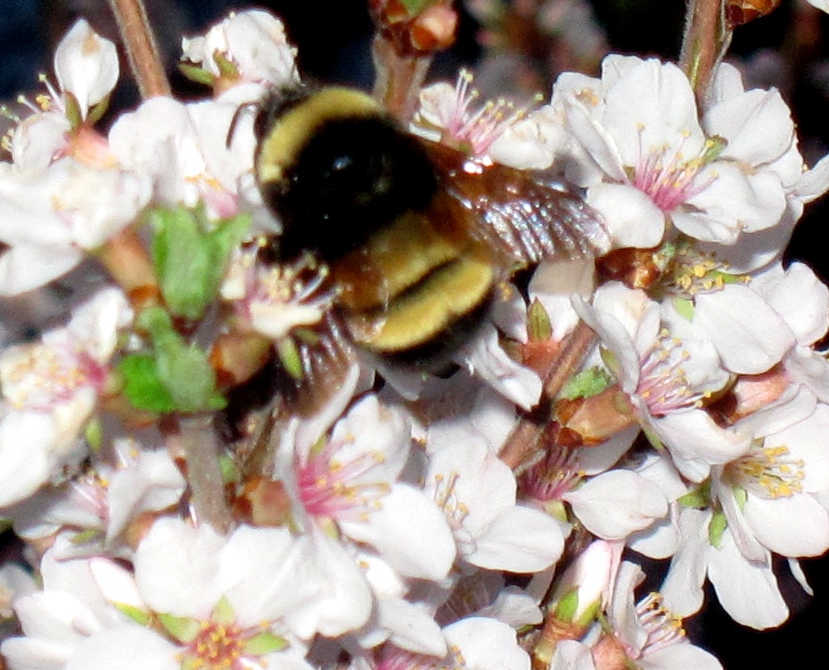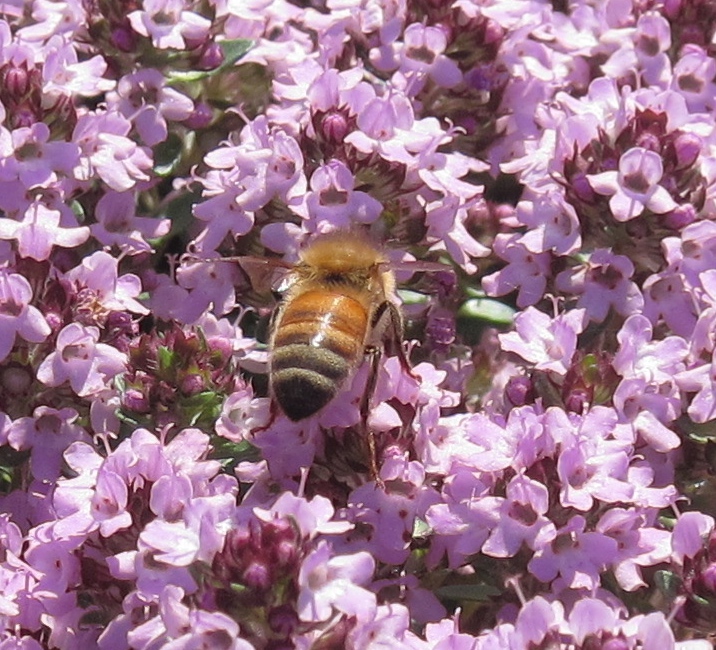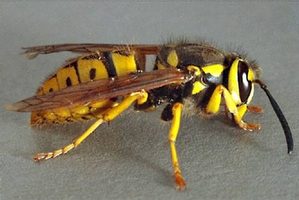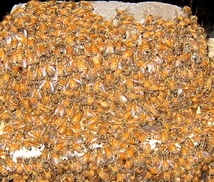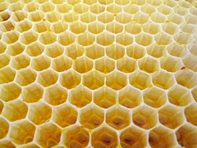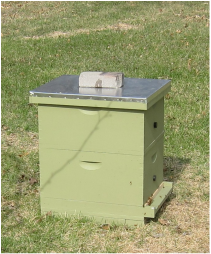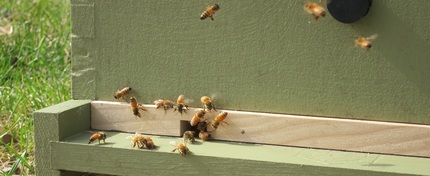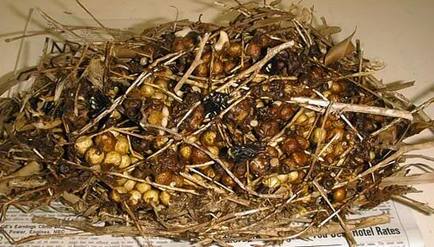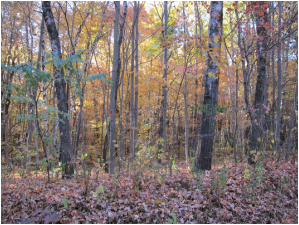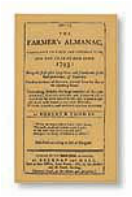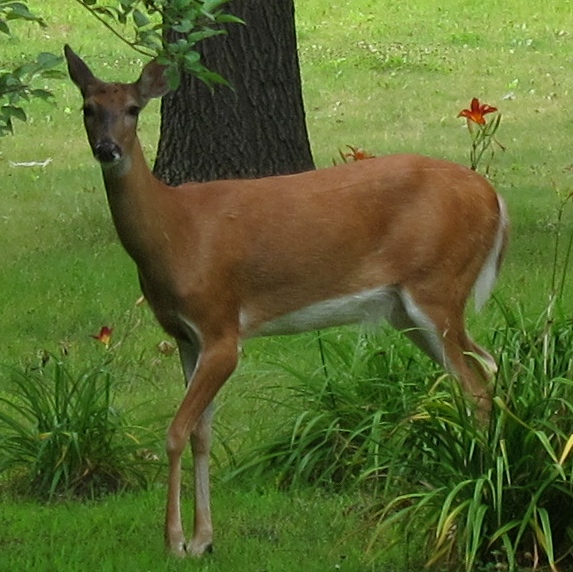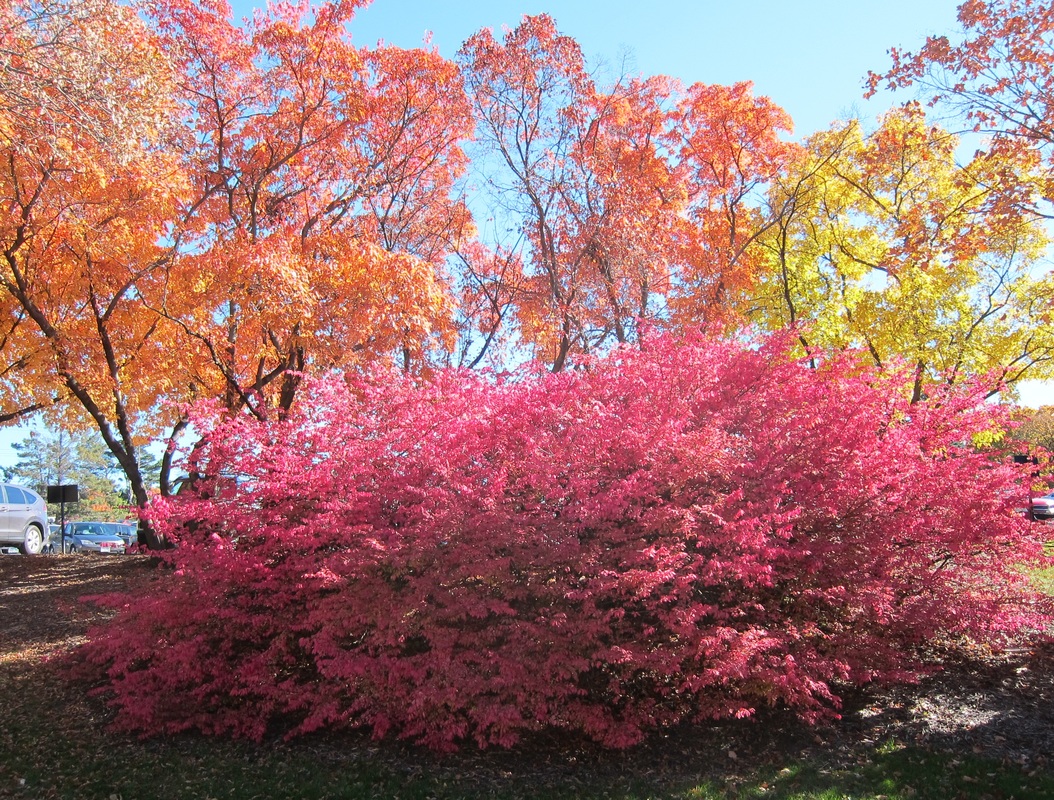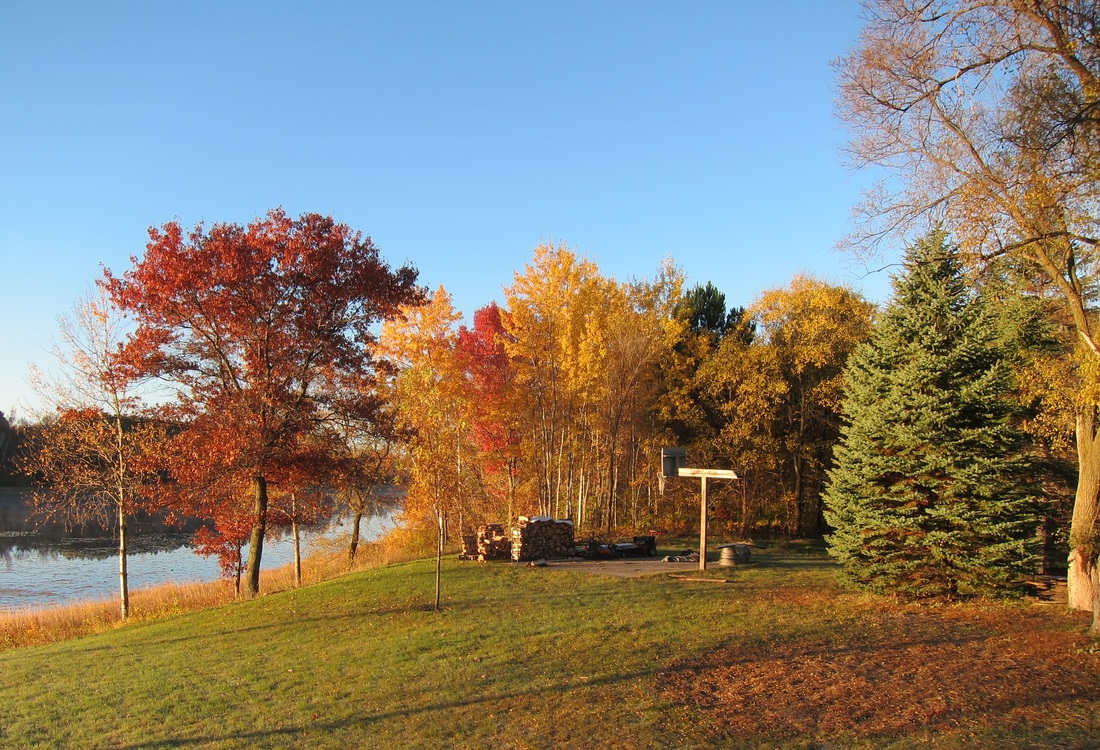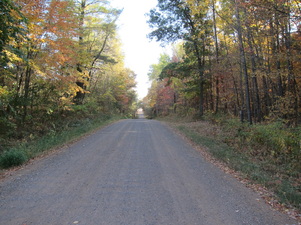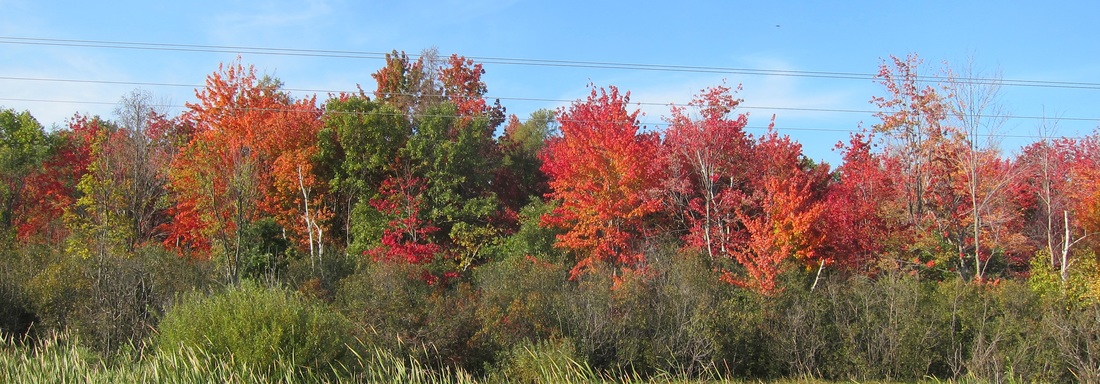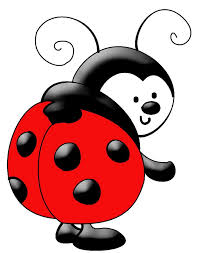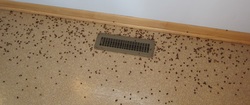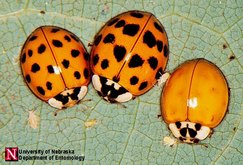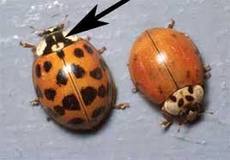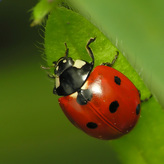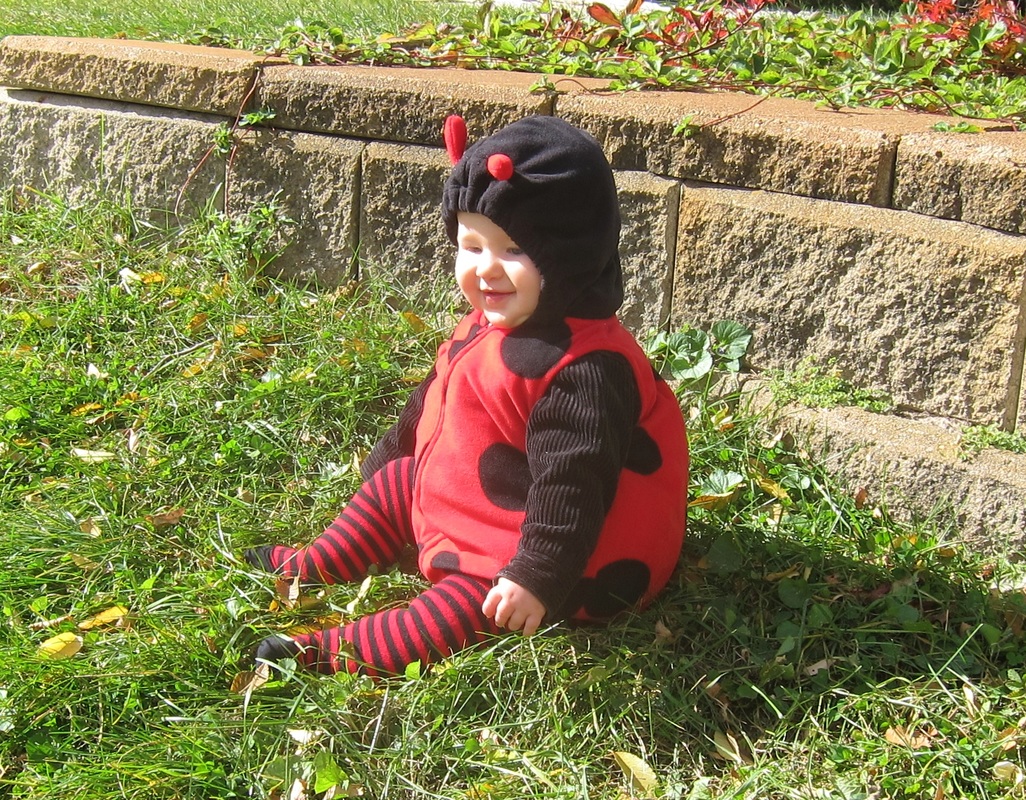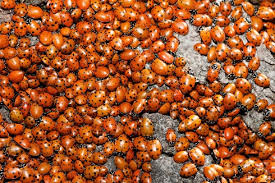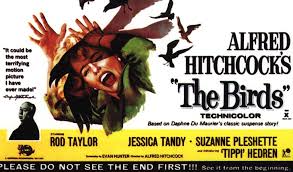| I totally neglected my scarlet runner beans all summer. I left them to dry on the vine at the end of the season and then harvested the dried pods. It was so fun to crack them open and get the pretty beans out. These are going to be a repeat crop next year just for fun. I think I'd grow them even if they weren't a good source of food. The first thing I made was a tomato-based dish (see below). Joel didn’t touch it until I added some sliced Polish sausages to the leftovers. When he finally did taste it he said it was really good. I’ll take that. |
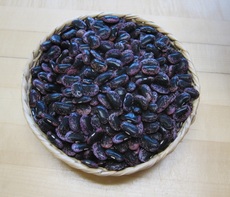
I'm new to scarlet runner beans and my experimentation is pretty limited, but connoisseurs say they have a "delicate, chestnut-like flavor" that makes them ideal to be used in a wide variety of recipes, including sweet dishes or creams in the form of a purée. Others say they have a smooth, creamy texture and a mild flavor lacking in a "bean-y element." I'm not ready to put them in a dessert, yet, but I will keep experimenting for a while (which means until I run out of beans or Joel refuses to play the guinea pig anymore).
Scarlet Runner Beans in Tomato Sauce (and Polish Sausage)
| 1 Tbsp olive oil
½ medium onion, sliced and cut into wedges ¼ cup diced red peppers, sweet or mildly hot 1 10 oz can Ro-tel diced tomatoes with green chilies 2 garlic cloves, minced 16 oz tomato sauce 2 fennel seeds 2 Tbsp dried parsley Salt and Pepper to taste 2 cups dried Scarlet Runner Beans 3 Polish sausages, sliced |
Wash, sort and soak the beans overnight. Pour off the water and rinse beans. Cover the beans completely with fresh water and boil about an hour or until tender, stirring occasionally. The cooking time will vary depending on how dry the beans are.
In a large skillet, sauté the onions. Add the peppers and garlic, and sauté a couple of minutes longer. Add the tomatoes, fennel, and parsley. When the mixture is hot, add the beans and sliced polish sausage. Add salt and pepper to taste. Bake at 350° for 30 minutes to blend flavors and thicken up. Serve with corn bread.
In a large skillet, sauté the onions. Add the peppers and garlic, and sauté a couple of minutes longer. Add the tomatoes, fennel, and parsley. When the mixture is hot, add the beans and sliced polish sausage. Add salt and pepper to taste. Bake at 350° for 30 minutes to blend flavors and thicken up. Serve with corn bread.
